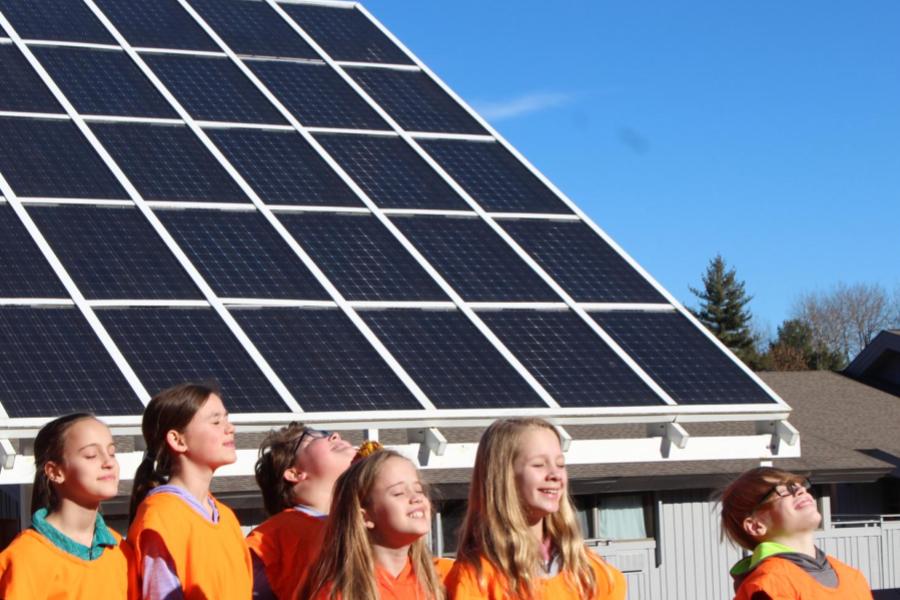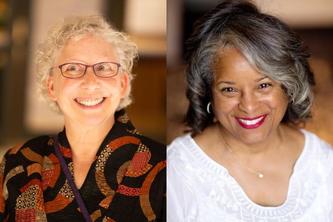
As Earth Day approaches, many Minnesotans are striving to make environmentally-friendly decisions that will protect our ecosystem for generations to come. Schools across the state have an opportunity to make a difference for the rising generation through solar power — creating an energy source that’s not only renewable but financially beneficial — through the Solar for Schools grant program.
How can schools transition to solar energy with Solar for Schools? Peter Lindstrom with Extension's Clean Energy Resource Teams (CERTs) has the answers.
Q: What is Solar for Schools?
Lindstrom: The Solar for Schools grant program, established by the Minnesota State Legislature in 2021, provides public schools with funds to install a solar energy system. While the cost of solar has dropped significantly, funding a solar array — the panels that convert sunlight into electricity — is the primary barrier. This program provides schools with funding to cover 40-70% of the array, depending on the district’s financial need, with federal or utility incentives covering another portion of the cost. Since its inception, the program has supported the installation of more than 40 arrays, with over 100 more in the works. Solar for Schools is tremendously popular across the state — over 80% of the participating schools are located in Greater Minnesota.
Q: How can solar energy benefit schools and the surrounding community?
Lindstrom: Solar panels generate sustainable electricity for communities without creating harmful air emissions — a 40 kW array also provides an environmental benefit equal to 635 tree seedlings growing for a decade.
Solar energy also relieves financial stress on Minnesota schools. Utility costs are often the second highest expense for schools behind personnel. Installing a 40kW solar array, which is about the size of a tennis court, can save a district $200,000 or more over the lifetime of the array.
Importantly, today’s youth will be making tomorrow’s energy choices — choices around energy technologies, markets, policies or working in the energy sector. Solar arrays are a conduit for conversation and inspiration in the classroom that drive the future of Minnesota.
Q: Is this an affordable option for local school districts?
Lindstrom: Yes, by design. Solar for Schools provides the highest incentives to schools with the most financial need. In the first full year of the program, over 80% of grantees were in the highest or second-highest tiers for financial need. Under-resourced communities stand to benefit the most from the energy cost savings and educational benefits of going solar.
In addition to the grant, the federal government has made direct pay available — a 30% tax credit for non-taxpaying entities such as schools, churches and nonprofit organizations.
The success of Solar for Schools led the Minnesota Legislature to nearly double the funding from an initial $16 million to $29 million in 2023 and expanded the list of eligible schools to tribal contract schools and cooperative districts.
Q: How can I suggest this to schools in my community?
Lindstrom: Solar projects often begin with interested residents bringing this opportunity to their local school. Of course, area students are particularly interested and effective advocates.
Identify champions in your community to help lead the effort and engage with other potential stakeholders and decision-makers, including the school’s superintendent, finance official and board members.
Q: What support does Extension provide for schools interested in solar energy?
Lindstrom: The primary role of the Clean Energy Resource Teams is to provide schools with free and unbiased technical assistance. Our motto is “good, better, best.” It's good if a school puts up a solar array, it’s better if they share their story and it’s best if they put up an array, share their story, and incorporate the array into the school’s curriculum.
CERTs can help districts do all of the above! This includes helping schools select a good location, stay informed about best practices, connect to qualified companies and link to solar-related curricula and opportunities that empower their students.
Peter Lindstrom is the manager of Public Sector and Community Engagement with CERTs at the University of Minnesota’s Regional Sustainable Development Partnerships and Extension. In this role Peter spearheads outreach and education to local units of government, like cities and school districts, about approaches for financing energy efficiency and renewable energy improvements.
About “Talking...with U of M”
“Talking...with U of M” is a resource whereby University of Minnesota faculty answer questions on current and other topics of general interest. Feel free to republish this content. If you would like to schedule an interview with the faculty member or have topics you’d like the University of Minnesota to explore for future “Talking...with U of M,” please contact University Public Relations at [email protected].
- Categories:
- Education
- Environmental health





